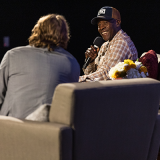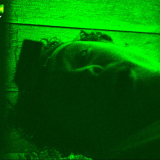Alumni Hone Their Skills on CFE Production STATIC
December 21, 2018
A clear vision was vital to design and direct Static, the second feature produced by Chapman Filmed Entertainment (CFE), a tough and timely story of a young man accused of rape during an on-air interview at his college radio station. The production required a variety of well thought out strategies to create a visually compelling film focused almost entirely on two characters in conversation in a single location. The demands on the director, production designer, cinematographer and the rest of the crew were intense, and as “real world” as you can get.
That same demand for a clear vision drives the purpose of Chapman Filmed Entertainment, Dodge College’s own independent production company. Designed to accelerate the careers of Chapman film school grads, the company aims to produce two or three films a year.
“No other film school has a program that allows alums and students to work on professional films, in the key creative jobs they’ve aspired to do. I can’t think of a better way to boost the resume than to have that ‘directed by’ or ‘production designer’ credit on a film that is recognized in the business.”
– Travis Knox, BFA/FTV ’93, CFE producer
The alumni who worked on Static were tested by the process and thrilled with the outcome – a hard-hitting story that challenges conventional thinking about the rights of both accuser and accused in today’s #MeToo environment.
THE PRODUCTION DESIGNER: CREATING LAYERS AND ACCESS
Designing for a film that takes place in a confined set and in real time drove production designer Marc de Bertier (BFA/FP ’18) to create a set that was “visually interesting and detailed enough to sustain the eye for an hour and a half.”
The result was a desk situated in the middle of a room “so the camera would have a 360° view,” with added depth made possible by installing glass in four of the set’s five walls.
“Each window looked into another room or a hallway, which made the space seem bigger and look more like a radio station,” de Bertier says. “The glass also added interest because it allowed us to play with the actors’ reflections or characters in other rooms.
“That created an additional challenge,” he says. “We had to learn how to build and mount windows that could be taken out of and/or put them back into their frame in less than three minutes, while managing a set with more than 50 flats.”
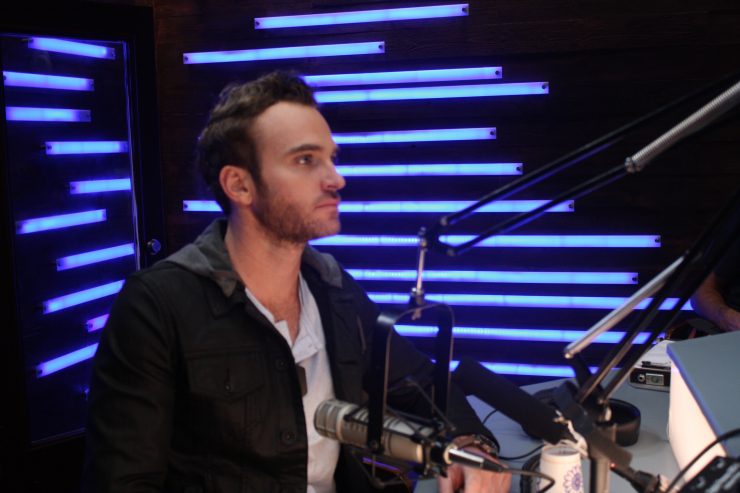
Actor Zack Gold plays Jake in Static.
Another key design element was the use of LED lights that changed with both the action and the mood of the story. The lights not only backlit the actors but also helped the set look larger. And, they helped create a tonal shift: as the story tone moves from light to dark.
“The red of the lights at the beginning is simply associated with being ‘on air,’” says de Bertier, “but at the end, this red takes a completely different meaning because the tone of the story has shifted. It is aggressive and is associated with the danger that comes with the blinking red of the phone each time it rings.
It was important that these design elements be interpreted in different ways for the set to be a real part of the story, instead of just being somewhere the story happens to take place.”
THE DIRECTOR: SHOOTING TO CREATE ENGAGEMENT
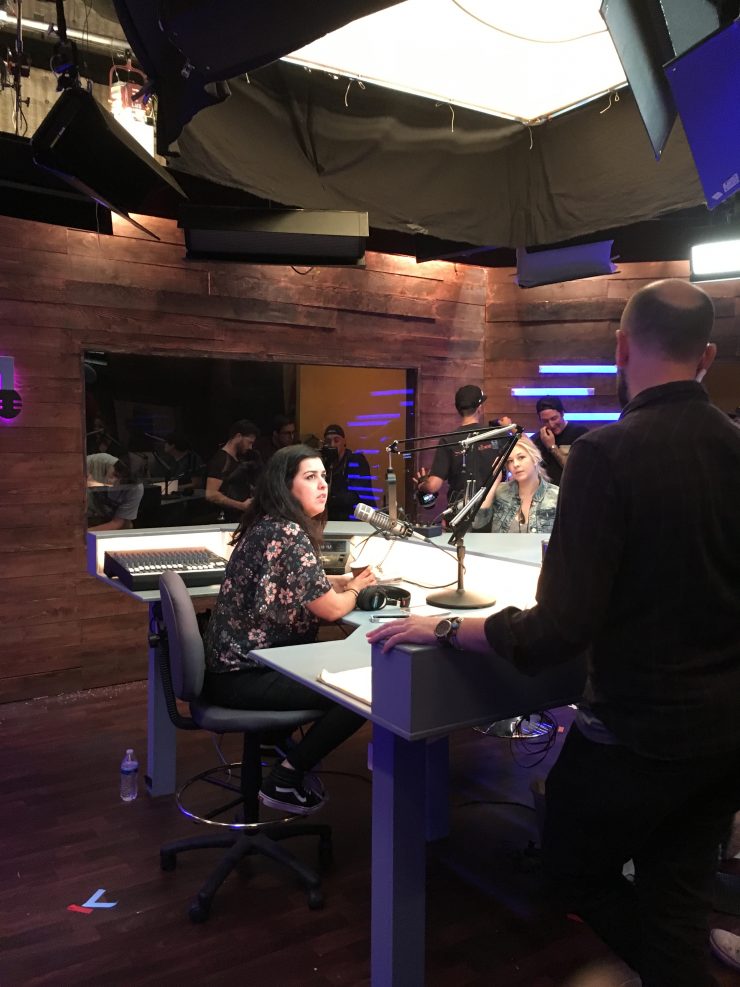
Director Miriam Anwari, left, discusses a scene with the crew.
As much as the set offered opportunities for variety, director Miriam Anwari (MFA/FP ’17) faced the challenges of finding shots that would maximize those opportunities without “shooting the film in way that wasn’t inorganic to the story – random flashy shots – but that would still keep audiences emotionally invested and visually interested.” Careful planning and the use of a two-camera crew gave her the freedom to experiment.
“Our Chapman crew was comprised of incredibly talented members with various ideas and takes on the topic, and after many discussions we were able to all bring what we did best to the table and create a unified vision of how best to achieve our goal of keeping the film compelling,” she says.
Also key to keeping the confined story interesting were the performances of the two main actors. Anwari was thrilled with the cast’s strong grasp and understanding of who their characters were and what their motivations were. Strong casting, she says, made her job easy. “What I learned about directing while working on this film is that ninety percent of directing is simply casting the film correctly.”
THE DIRECTOR OF PHOTOGRAPHY: KEEPING IT FRESH
While the production design offered the DP a variety of angles and the many lights offered endless possibilities, windows and reflections were a huge challenge for director of photography Nick Ramsey (MFA/FP ’16). Ramsey “really learned a lot about technology” as he took advantage of the state-of-the-art lighting systems to really “shake up our scenes.”
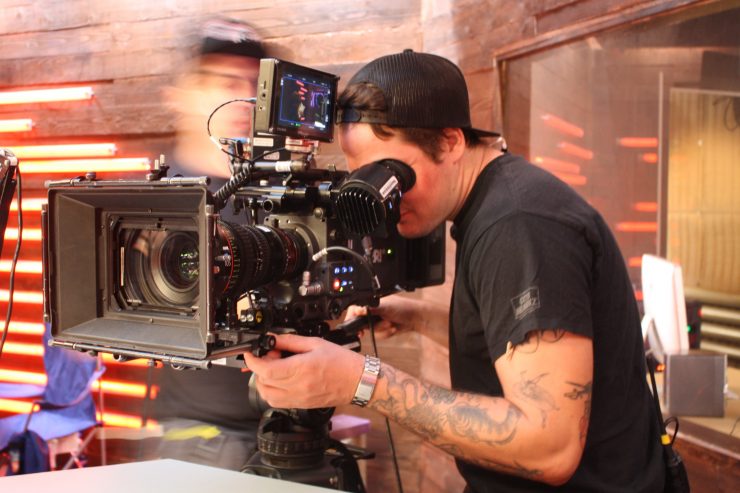
Charlie Reetz (MFA/FP ’18) ran Steadicam.
“We had over 400 feet of LED ribbon built into our set and another 60 different LED fixtures,” he says. “We needed the lights to change and adjust on camera in the scene. Our amazing electric team worked tirelessly to run and map our lights. This really helped us move fast, because we were able to build cues and change lighting setups at a push of a button.”
With windows on three sides “it really became a challenge to chase a reflection of a reflection,” he says. “But through sheer attention to detail and hard work by the entire crew we all managed to hide the majority of reflections,” a job that was made even harder “as we introduced a second camera.”
THE EDITOR: TRAINING AN EDITORIAL CREW
Alumnus Greg Thompson (BA/COM ’85) had a different role than other alumni working on the film. An experienced editor in his own right, having edited CFE’s first feature, The Barber, and worked on a long list of films from the newly released film The Meg to Mission Impossible II, Thompson managed and supervised an editorial crew consisting of Genevieve Hernandez (MFA/FP ’18), Kellen Ho (MFA/FP ’19) and Liz Arnaud (MFA/FP ’19).
Thompson hopes his crew came away with “an understanding of how to set up and run a professional cutting room. I think they learned that organization and communication are the keys; I hope I showed them that there are no shortcuts and that you have to put in the work. You have to watch all the dailies and you have to do your best to stay up to camera, meaning you have to be editing the scenes as you get them so you do not fall too far behind.”
With takes running as long as 15 minutes, the single location and a major character who is never seen but only heard on the phone, Thompson and his crew still enjoyed a wide range of editorial choices. “You have to give the director credit for getting such great performances,” he says. “Also, she got a lot of interesting angles and kept the camera moving a lot. I really have to give her and her DP credit for always giving me some place interesting to go editorially. But mostly it’s easy to cut a scene when you have great performances.”
THE OUTCOMES: JOB OFFERS AND EXPERIENCE
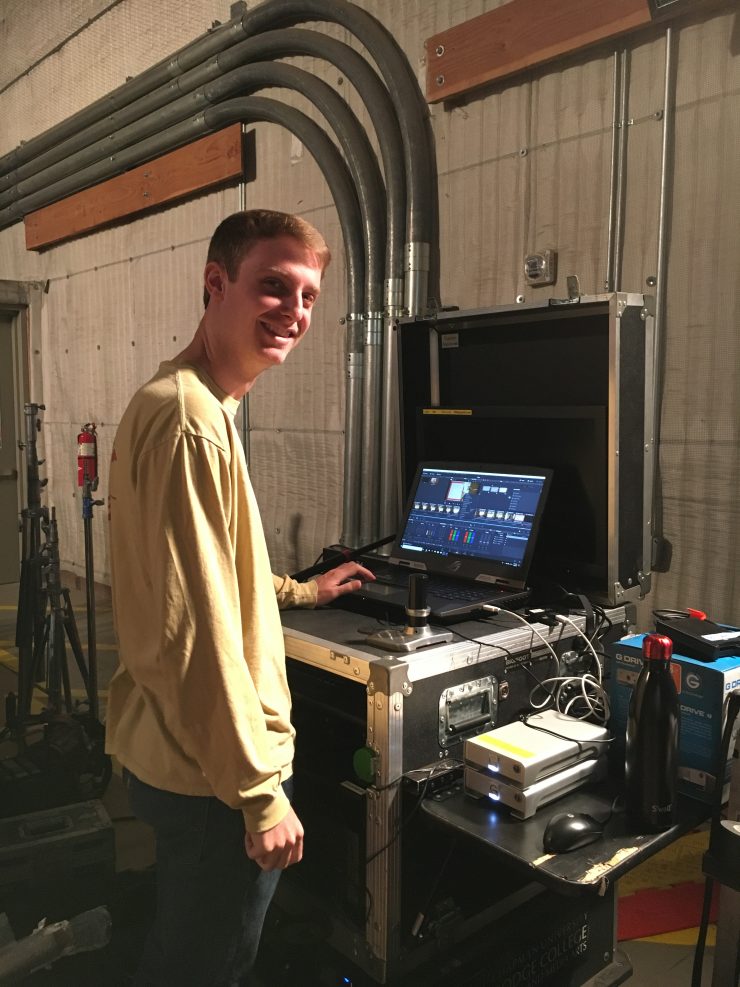
Dillon McEvoy (BFA/FP ’19) operates the DIT cart.
Already, Dillon McEvoy (BFA/FP ’17) has been “receiving more job offers as a DIT (digital imaging technician) after working on Static. I had never managed media on a show this big before,” he says, “but I learned a lot about managing multi-cam footage and transcoding with precise metadata. This was a great introduction into the world of working on longer length and bigger budget projects.
“One of the greatest things about this program is that it gave us the opportunity to practice our craft at a higher level than is normally available to recent grads,” says Ramsey. “We had the support of an incredible institution and the passion of the young storytellers on our team.” This project “certainly adds validity and authenticity to my resume.”
And, moving forward, Static helped build relationships through which alumni can help each other find work in the industry. As Greg Thompson put it, “I would take this crew on any show, anytime, anywhere!”
This article was originally published in our Fall 2018 In Production Magazine. This issue focuses on exploring identity through filmmaking, alumni honing their skills on the latest CFE production, Chapman’s third Student Academy Award-win, and a spotlight on our Screenwriting program. Check out the full magazine on issuu.

